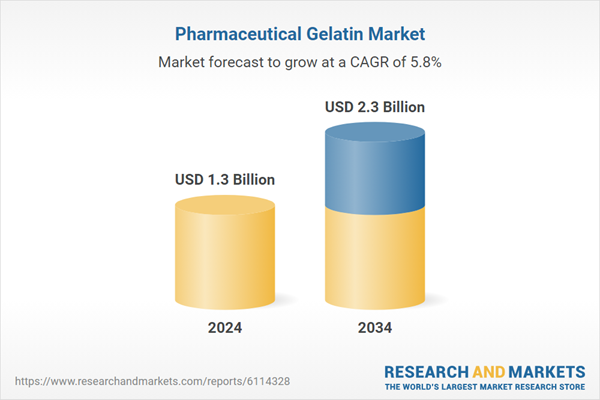Pharmaceutical gelatin is a refined protein derived from collagen sources such as animal bones and skins. It is commonly used for its unique physical and chemical properties, including thermal reversibility, biocompatibility, and ease of digestibility. These features make it an ideal material for manufacturing capsules, coating agents, wound dressings, and other medical formulations. With pharmaceutical companies increasingly focused on improving the efficacy and stability of their products, gelatin’s role as an excipient has become more important than ever. The steady shift toward innovative drug formats and the development of advanced delivery systems have also contributed to the growing reliance on pharmaceutical-grade gelatin across the industry. Major producers of pharmaceutical gelatin play a crucial role in maintaining consistent quality, adhering to regulatory guidelines, and offering tailored solutions to meet evolving formulation needs.
In terms of product types, the pharmaceutical gelatin market is divided into type A and type B gelatin. Among these, type B gelatin held a dominant position in 2024, accounting for approximately 65.4% of the overall market share. One of the main reasons for its broad adoption is its cost-effective manufacturing process. Type B gelatin is typically processed through alkaline hydrolysis, which imparts favorable characteristics such as high thermal stability and a nearly neutral pH. These properties make it especially suitable for pharmaceutical uses, including capsule shells, film coatings, and injectable formulations. Moreover, its predictable performance in drug manufacturing environments ensures uniformity and quality, which are critical parameters in large-scale pharmaceutical production. As a result, type B gelatin continues to be a preferred choice among formulators seeking reliability and versatility in excipient performance.
The market is further segmented based on the source of gelatin, which includes bovine, porcine, fish, and poultry. Among these, gelatin derived from bovine sources represented the largest segment in 2024, holding a market share of 48.4%. It is anticipated to expand at a CAGR of 6.1% during the forecast period. Bovine-derived gelatin benefits from a stable and abundant supply of raw materials, thanks to widespread cattle farming. Its strong gelling strength, high viscosity, and excellent stability across processing conditions make it particularly suitable for a wide array of pharmaceutical applications. These include not just capsule manufacturing but also uses in plasma expanders and wound care products. The consistent quality and reproducibility of bovine gelatin further enhance its value in ensuring standardized formulation outcomes.
Regionally, North America led the global pharmaceutical gelatin market with the highest revenue contribution, securing a 38.2% market share in 2024. The dominance of this region is largely attributed to its advanced pharmaceutical production infrastructure and a highly regulated yet supportive compliance environment. Pharmaceutical companies in North America actively integrate gelatin into a variety of dosage forms due to its proven performance and adaptability. Additionally, ongoing investment in research and development across the pharmaceutical landscape supports the emergence of sophisticated gelatin-based drug delivery solutions. A well-established ecosystem of contract manufacturing organizations further strengthens the regional market, helping meet both domestic and global demand.
The global pharmaceutical gelatin market exhibits a moderately consolidated structure. These players maintain their competitive edge through global manufacturing capabilities, strict adherence to quality standards, and consistent innovation in product development. Their focus on enhancing gelatin’s functional properties for use in specialized formulations - such as controlled-release capsules or absorbable surgical aids - adds depth to the market. At the same time, newer entrants in developing regions are making their presence felt by providing cost-efficient gelatin options, establishing certified facilities, and targeting emerging demand across underpenetrated markets.
Comprehensive Market Analysis and Forecast
- Industry trends, key growth drivers, challenges, future opportunities, and regulatory landscape
- Competitive landscape with Porter’s Five Forces and PESTEL analysis
- Market size, segmentation, and regional forecasts
- In-depth company profiles, business strategies, financial insights, and SWOT analysis
This product will be delivered within 2-4 business days.
Table of Contents
Companies Mentioned
- Capsugel (Lonza)
- Funingpu Biotechnology
- Gelita AG
- India Gelatine & Chemicals
- ITALGEL
- Juncà Gelatines
- Lapi Gelatine
- Nitta Gelatin
- Rousselot (Darling Ingredients)
- Sterling Biotech
- PB Leiner (Tessenderlo Group)
- Trobas Gelatine
- Weishardt Group
- Xiamen Gelken Gelatin
Table Information
| Report Attribute | Details |
|---|---|
| No. of Pages | 150 |
| Published | July 2025 |
| Forecast Period | 2024 - 2034 |
| Estimated Market Value ( USD | $ 1.3 Billion |
| Forecasted Market Value ( USD | $ 2.3 Billion |
| Compound Annual Growth Rate | 5.8% |
| Regions Covered | Global |
| No. of Companies Mentioned | 14 |









